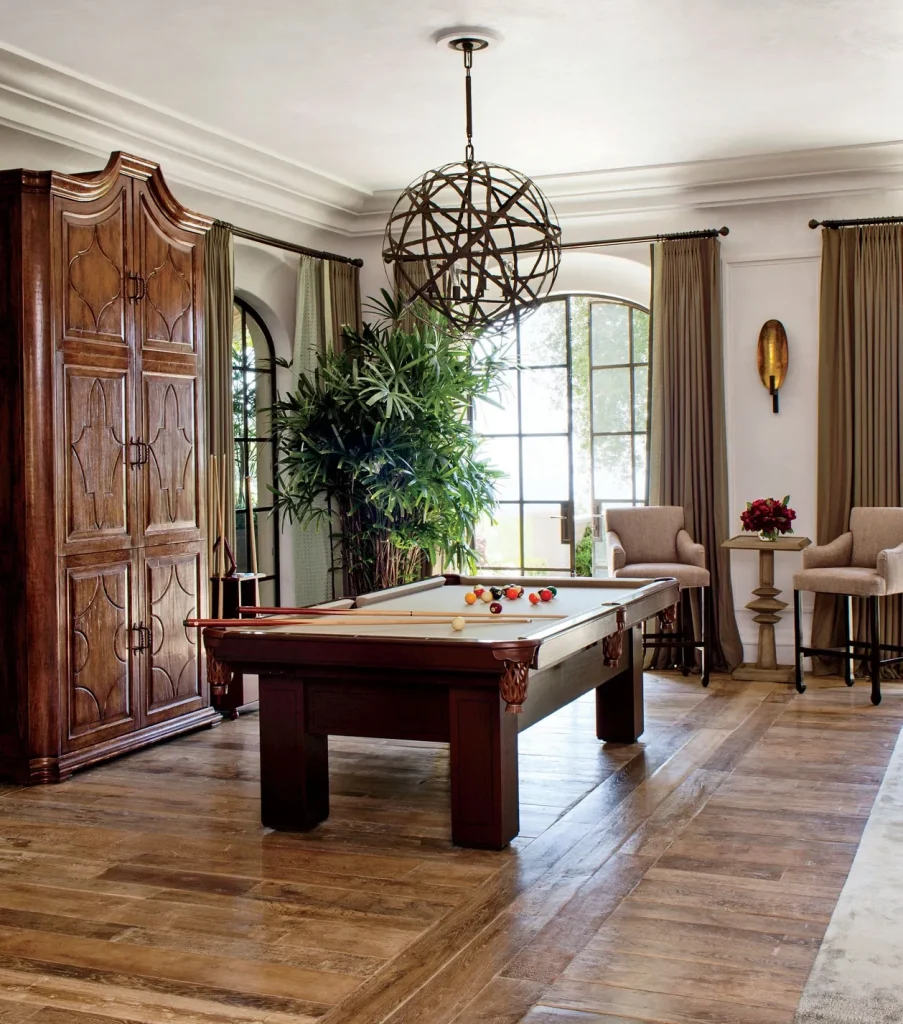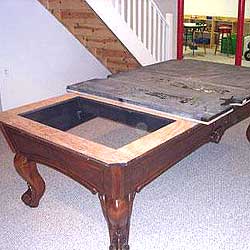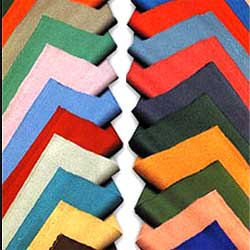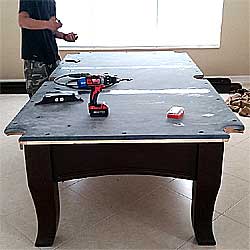Call us; 1-508-254-5671
Hudson, MA
Pool Table Billiard Movers and Repair
With 30 years of pool table best practices. Hudson, Massachusetts
Who can professionally repair, re-felt, re-level my pool billiard table? What is the best option for a safe billiard pool table moving company?
Safe pool table moving method.
I got a billiard table from the internet, and who will install and move it? Corner Pocket Pool Table Services, Your safest, best choice. In Hudson, MA, Massachusetts MA, New Hampshire NH, Vermont VT, Rhode Island RI, Pool billiard table work.
Billiards table felt replacement and movers, fixing and relocating pool tables in Hudson, Massachusetts neighborhoods for more than thirty years. We have been repairing and moving pool tables in all styles and from all brands.
Corner Pocket Pool Table Service is run entirely by family, and covering Hudson, Massachusetts. Billiard and pool table movers and service experts.
Re-felt and tuning service for your billiard table, or move your table within new england, starting from Hudson.
Five star ratings and reviews, Hudson, Massachusetts.

Hudson is a town in Middlesex County, Massachusetts, United States, with a total population of 20,092 as of the 2020 census. Before its incorporation as a town in 1866, Hudson was a neighborhood and unincorporated village of Marlborough, Massachusetts, and was known as Feltonville. From around 1850 until the last shoe factory burned down in 1968, Hudson was a mill town specializing in the production of shoes and related products. At one point the town had 17 shoe factories, many of them powered by the Assabet River, which runs through town. The many factories in Hudson attracted immigrants from Canada and Europe. Today most residents are of either Portuguese or Irish descent, with a smaller percentage being of French, Italian, English, or Scotch-Irish descent. While some manufacturing remains in Hudson, the town is now primarily residential. Hudson is served by the Hudson Public Schools district.
Indigenous people lived in what became central Massachusetts for thousands of years prior to European settlement. Indigenous oral histories, archaeological evidence, and European settler documents attest to historic settlements of the Nipmuc people in present-day Hudson and the surrounding area. Nipmuc settlements along the Assabet River intersected with the territories of three other related Algonquian-speaking peoples: the Massachusett, Pennacook, and Wampanoag.
In 1650, the area that would become Hudson and Marlborough was part of the Ockookangansett Indian Plantation for the Praying Indians. During King Philip’s War, English settlers forcibly evicted the Indians from their plantation, imprisoning and killing many of them; most survivors did not return after the conflict. The first recorded European settlement of the Hudson area occurred in 1698 or 1699 when settler John Barnes was granted 1 acre (0.40 ha) of Indian lands straddling both banks of the Assabet River. Barnes built a gristmill on the Assabet River’s north bank on land that would one day be part of Hudson. In 1699 or 1700 Barnes sold his gristmill to Joseph Howe, who built a sawmill and bridge across the Assabet. Other early settlers include Jeremiah Barstow, who built a house near today’s Wood Square in central Hudson, and Robert Barnard, who purchased the house from Barstow. The area became known as Howe’s Mills, Barnard’s Mills, or simply The Mills throughout the 1700s.
The settlement was originally part of the town of Marlborough. In June 1743, area residents Samuel Witt, John Hapgood, and others petitioned to break away from Marlborough and become a separate town, claiming the journey to attend Marlborough’s town meeting was “vastly fatiguing.” Their petition was denied by the Massachusetts General Court. Samuel Witt later served on committees of correspondence during the 1760s. At least nine men from the area fought with the Minutemen on April 19, 1775, as they harassed British troops along the route to Boston.
The area established itself as an early industrial center. Business partners Phineas Sawyer and Jedediah Wood built a sawmill on Tannery Brook, a tributary stream of the Assabet River today crossed by Main Street, in the mid-1700s. This was followed by another mill on the Assabet in 1788 and a blacksmith’s forge in 1790. Joel Cranston opened a pub and general store—the settlement’s first—in 1794. Silas Felton (1776–1828) arrived in the settlement in 1799, joining Cranston in business: it was not long before the area became known as Feltonville.
Feltonville’s—and later Hudson’s—significant role in the shoe industry may trace its origins to Daniel Stratton. A shoemaker, Stratton opened his Feltonville shop in 1816, expanding it to a small factory on Washington Street in 1821.
In the 1850s, Feltonville received its first railroads. There were two Feltonville train stations, originally operated by the Central Massachusetts Railroad Company and later by Boston & Maine, until both were closed in 1965. Railroads allowed the development of larger factories, some of the first in the country to use steam power and sewing machines. By 1860, Feltonville had 17 shoe and shoe-related factories, which attracted Irish and French Canadian immigrants.
Diverse Tables
From basic models, to less common; custom, hand-made tables and everything in the middle. We’ve seen a great many them. Not to say that we have really seen each model of table that there is… The standards are much the same starting with one then onto the next. Occasionally we see a new technique. We love to learn these, and it is always enjoyable to have a finished product you will love!Distinctive Houses
From Landmark houses in Hudson, to delightful little homes, we’ve placed tables in every one of them.
Also, we treat every house like our own. We anticipate giving you the best working pool table you’ve ever played on.

